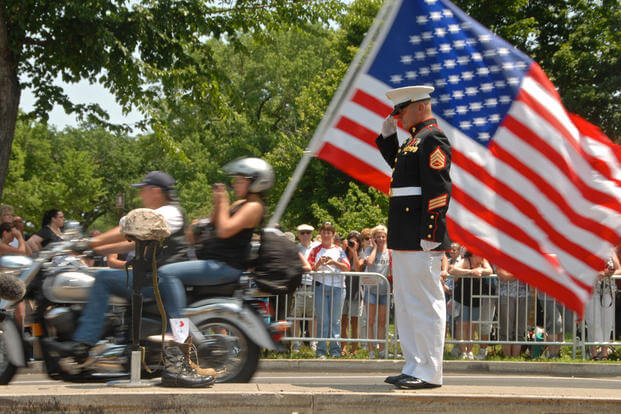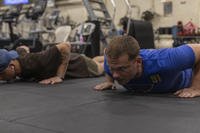Thousands of soldiers, sailors, Marines and airmen crowded into a staging area. Some checked their maps, others made last-minute adjustments to their vehicles and equipment. Months of planning were about to turn into action. On cue, engines roared to life, and a massive formation embarked on a new kind of mission.
This was Operation Rolling Thunder -- but not the one that the U.S. military conducted in Vietnam during the 1960s. Motorcycles replaced bomber jets, leather vests replaced combat fatigues, and Washington, D.C., streets took the place of Southeast Asian jungle.
What was the Rolling Thunder motorcycle rally all about, and why did it end? The story has dark beginnings and a silver lining -- and it’s one you should know.
Rolling Thunder Started in Vietnam
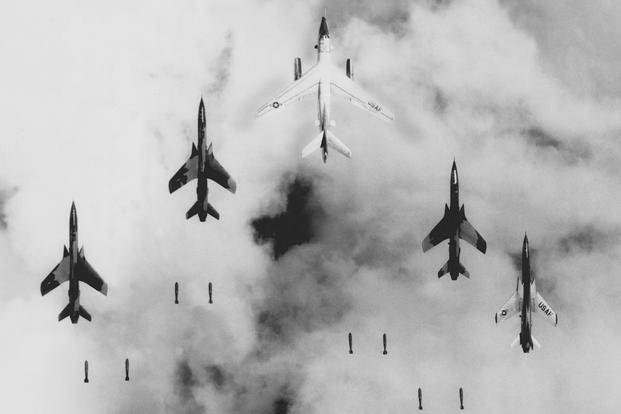
The first time Operation Rolling Thunder entered the American lexicon came in 1965. The United States military was in a shooting war in Vietnam, but the real fight was against communist expansion by the Soviet Union and China. In an effort to contain fighting in Vietnam and avoid direct conflict between global superpowers, policymakers in Washington, D.C., fell back on an old favorite: the undefeated record of American air superiority.
Air power “seemed to offer the possibility of war at arm's length and on the cheap, although most policymakers realized that the use of air power would be cheap only by comparison with a manpower intensive land war,” according to a 1989 assessment of the campaign from Air Force University’s Center for Aerospace Doctrine, Research, and Education.
The plan was simple: Operation Rolling Thunder would destroy the Viet Cong’s critical resources in North Vietnam almost instantly, bringing the enemy’s fighting capability to a screeching halt with minimal involvement from on-the-ground troops.
As the Air Force Historical Support Division points out, that didn’t happen. When the plan failed to cripple the Viet Cong’s war effort, the Johnson administration changed the objective; rather than destroying resources at the source, American air power would intercept them on the way to the battlefield and cut off supply lines.
When hunting down bicycles in the jungle from 30,000 feet turned out to be virtually impossible, the goalposts vanished altogether. After years of futilely lobbing explosives into the jungle and losing downed pilots and crew to North Vietnamese prison camps, bombing ceased in 1968. President Lyndon B. Johnson began negotiations with the North Vietnamese in 1969.
The U.S. ended its involvement in Vietnam in 1973, and North Vietnamese forces seized Saigon in 1975, according to the U.S. Department of State. American air power had met its match, and the victor was fighting in flip-flops.
Welcome Home; Now See Yourself Out

The National Archives reports that 58,220 Americans died in Vietnam. North Vietnam returned 591 American prisoners of war as part of Operation Homecoming following the Paris Peace Accords in 1973. Approximately 2,500 U.S. service members remained missing.
Polling as recent as 1991 found that the majority of Americans not only believed North Vietnam failed to return all prisoners of war, but considered the U.S. government derelict in its duty to free them.
And if it wasn’t bad enough that service members felt betrayed by their government both during the conflict and decades after it ended, the general public gave returning service members an ice-cold reception.
“I remember feeling like, what could I do to acknowledge them, and I just gave the peace signal,” as Steven Wowwk, an Army veteran who was wounded in Vietnam, told History in 2018. “And instead of getting return peace fingers, I got the middle finger.”
Remembering Those Left Behind
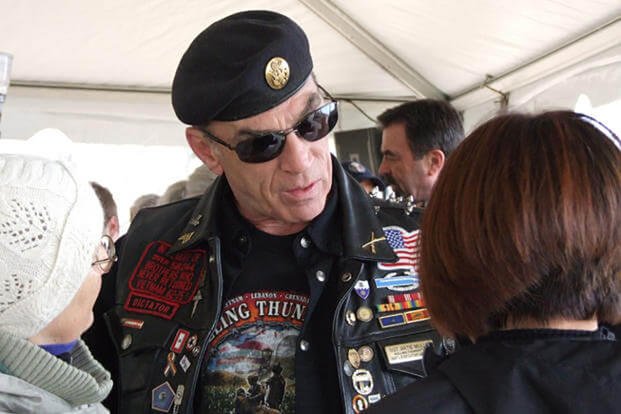
In the decades following the withdrawal from Vietnam, veterans of the conflict couldn’t help but notice that their elected leaders were more than happy to put the war’s scars behind them -- prisoners and missing service members included.
Two Vietnam veterans, Artie Muller and Ray Manzo, brought the issue back into the public eye with a motorcycle rally in 1988.
It started with a letter-writing campaign to recruit veteran motorcyclists for a ride through Washington, D.C., on Memorial Day. Manzo wrote to veteran groups, politicians and other riders to get the word out.
“I am asking for your assistance in organizing a Nationwide Run all across America for as many bikers as possible to ride to Washington, D.C., for Memorial Day 1988 and bring about an end to the POW/MIA problem,” the letter said, according to History.net. “We have to make one more huge effort to get our POW/MIAs home. Please help.”
Manzo’s letter ended up published by Outlaw Biker and Easy Riders, two major motorcycle magazines of the time. That was the spark the cause needed: A few months later, an estimated 2,500 veterans showed up in the nation’s capital on their motorcycles, according to Histories of the National Mall
The demonstrators delivered their message loud and clear, and others would join their mission. According to History.net, more than 30,000 riders came the following year and attendance grew to 75,000 a few years later. According to WUSA9, Washington, D.C.’s CBS affiliate, attendance had grown to 500,000 by 2018.
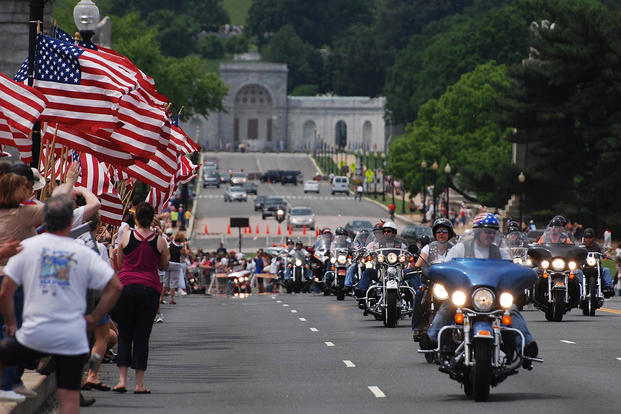
The rally was a great way for veterans to build a community, but the point was always to remind elected officials and military leaders that they have not succeeded in bringing home everyone they’ve sent to war -- and not just the one in Vietnam.
By the Department of Defense’s own numbers, more than 80,000 U.S. missing service members have not been accounted for from overseas wars. There is an ongoing effort to recover these missing service members, but the process requires extensive research, DNA samples from living family members and years of forensic testing.
In 2019, Rolling Thunder organizers announced an end to the rally. According to The Washington Post, Muller pointed to a lack of cooperation from the Pentagon Security Police and Washington Police and an increase in harassment of supporters and sponsors. Pete Zaleski, Rolling Thunder Inc.’s then-vice president, chalked it up to a lack of funding. Whatever the cause, the last Rolling Thunder rally took place in 2019.
Rolling to Remember

Rolling Thunder is in the history books, but the movement rides on. Veterans and their motorcycles are scheduled to flood the streets of Washington for the 36th consecutive year at the 2024 Rolling to Remember rally.
These days, the ride is hosted by AMVETS. The organization dates back to 1944, when it first started helping veterans access federal support programs. As in the past, veterans plan to meet at the Pentagon, ride through the city and around the National Mall, and gather at the Lincoln Memorial for a candlelight vigil.
The U.S. military’s involvement in Vietnam ended 51 years ago. It’s been 36 years since riders went kickstands-up for the first Rolling Thunder rally. With every year that passes, fewer Vietnam veterans are able to throw a leg over a motorcycle to participate.
The cause isn’t getting any quieter, though. New generations of veterans and service members continue to make the pilgrimage to the nation’s capital each Memorial Day to speak for those who were killed or captured and never came home.
It turns out that the roar of veterans’ motorcycles lasted a lot longer than the infamous Rolling Thunder bombing campaign.
Want to Know More About the Military?
Be sure to get the latest news about the U.S. military, as well as critical info about how to join and all the benefits of service. Subscribe to Military.com and receive customized updates delivered straight to your inbox.
